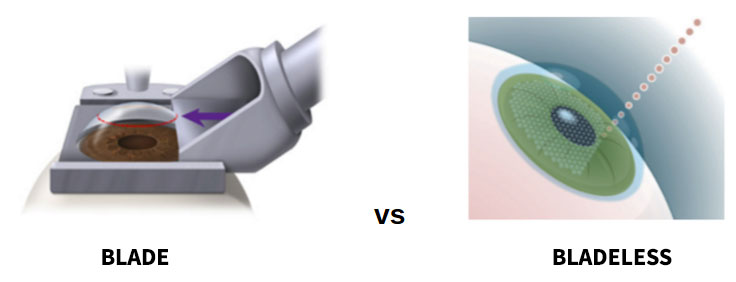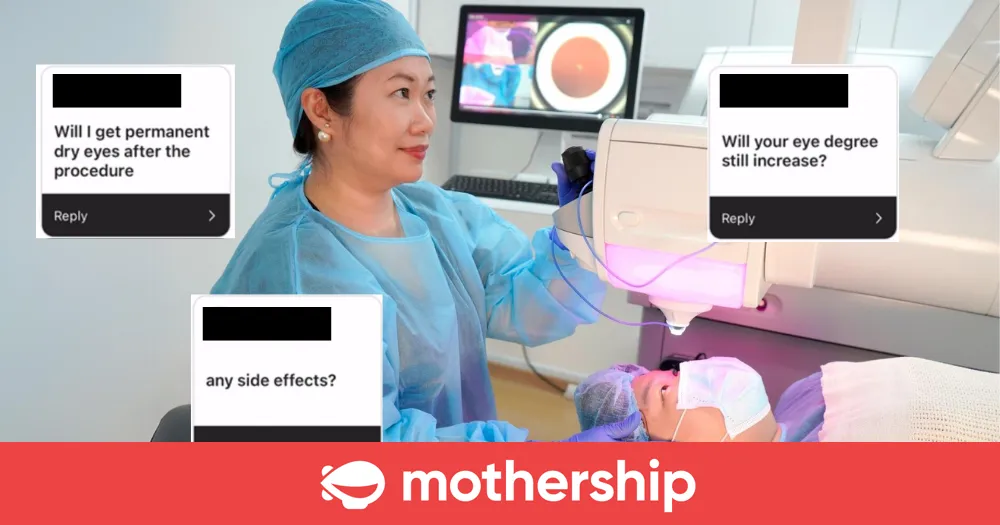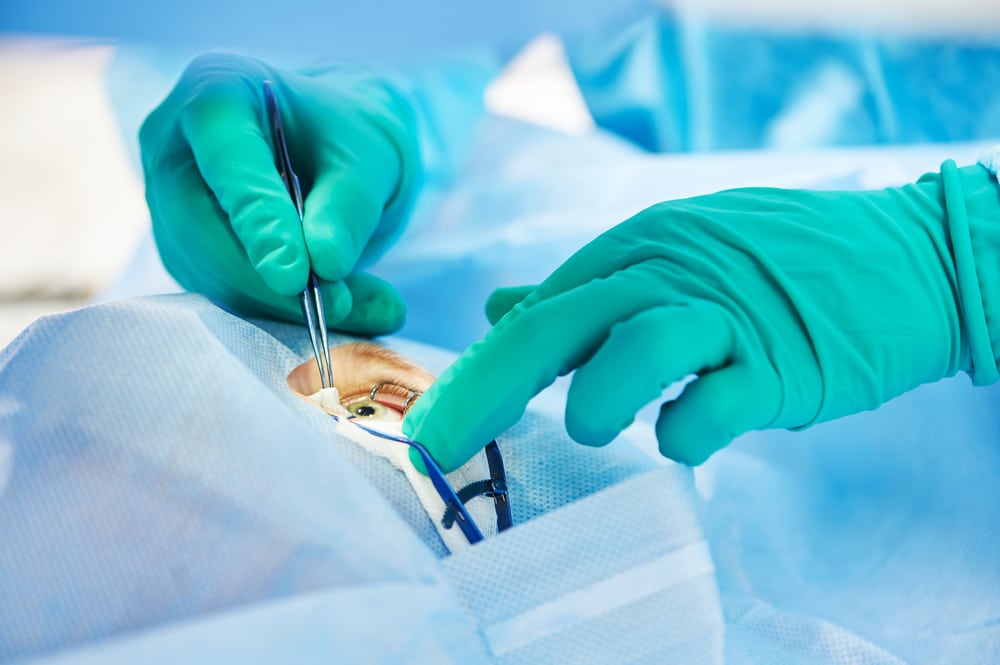What is LASIK?
LASIK stands for Laser-Assisted In-Situ Keratomileusis, a procedure that involves the use of a laser to reshape the cornea of the eye so that light traveling through is properly focused onto the retina for a sharp and clear image. This improves refractive capability and allows varying degrees of myopia (short-sightedness), hyperopia (far-sightedness) and astigmatism (“san guang”) to be corrected.
LASIK is one the most popular laser vision correction procedures with more than 28 million procedures performed worldwide to date. Since it was first approved in 1999, LASIK has been regarded as a safe and successful method for vision correction with minimal downtime and quick recovery.
Is LASIK suitable for me?
You are eligible for LASIK if you:
- Are at least 18 years old.
- Have had a stable vision prescription for at least 1 year with
a refractive condition that is within the treatment limits of LASIK. - Are in good general health.
- Have no existing eye diseases
(eg. cataract, glaucoma, diabetic retinopathy, retina problems). - Have sufficient corneal thickness.
- Are not pregnant. However, you can proceed with LASIK 2 months
after delivery.
Eligibility is best determined through a pre-LASIK eye evaluation at our clinic.
Common Concerns & What To Look Out For
When Considering Refractive Surgery
History of LASIK
LASIK surgery has also advanced steadily over the years. The technology used to measure refractive errors prior to surgery has been progressing and laser correction can now be optimised for different patient needs. At LSC Eye Clinic, we provide an extensive range of refractive surgeries, from flap-based to flap-less, so patients are able to choose the treatment which suits them best.
LASIK is performed with numbing eye drops and both eyes are usually treated at the same time. You will need to be awake during the procedure to focus on the centre of a blinking light. There will be a special instrument to hold your eyelids to prevent your eyes from closing when you blink during the surgery. The actual surgery for each eye takes between 5-10 minutes while the entire process may take around 20-30 minutes.


Historically, a hand-held microkeratome blade was used in the first step of LASIK to create a corneal flap, the thin layer of tissue the doctor folds back to expose the part of the eye that is reshaped during the LASIK procedure. However, there were severe and sight-threatening complications relating to this mechanical method. With advances in technology, a corneal flap is now typically created using a femtosecond laser, making the procedure ‘bladeless’. It is a computer-guided, ultrafast excimer laser that creates an optimal surface below the flap, allowing for better visual outcomes.
Types of LASIK treatments offered
Standard LASIK
This refers to the conventional one-size- fits-all LASIK that can correct vision problems such as Myopia, Hyperopia and Astigmatism.
Customised / Topography-guided LASIK
This refers to a LASIK treatment that is customised for an individual. It includes mapping with iris registration to capture specific characteristics and unique imperfections in an individual’s eyes to accurately align each Customised LASIK treatment for precise and accurate LASIK correction. The quality of vision after Customised LASIK is better especially in dim light conditions and if one has higher astigmatism.
Our LASIK Technology
ZEISS Suite
The ZEISS suite comprises of three systems. The VisuMax utilises a femtosecond laser to create the cornea flap. This machine can then go on to perform the entire ReLEx SMILE procedure. However, in LASIK procedures, the CRS-Master® software is employed to create a customised treatment for each individual eye. The MEL 90 excimer laser is then used to correct the refractive errors.

What are the risks and side effects of LASIK?
- The most common temporary side effect you may experience is dry eyes. This may last for a week to a couple of months after the surgery.
- Another common temporary side effect is night vision problems, which usually manifest as haloes, starbursts and glares. These may last up to 9 or 12 months.
- The risk of infection after surgery may also occur, although only 1 in 10,000 people. In unlikely instances of infection, seek treatment immediately. Delayed treatment may lead to vision loss.
What to expect after LASIK?
It is common to experience tearing and some discomfort for the first 6 hours after surgery. Sleeping pills will be prescribed to help you sleep away the discomfort. You are required to wear a protective eye shield when sleeping to protect the eye for at least 3 days after surgery. Typically, the eye may feel irritated for a day or two after surgery. Medicated eye drops are prescribed for 1 week following surgery.
Read also: Is it Worth Spending on Lasik to Correct Your Eyesight?
Do take note of the respective time periods to avoid these activities after LASIK surgery:
- Exercising (gym activities): 2-3 days
- Traveling by plane: 3-5 days
- Wearing eye makeup: 1 week
- Swimming, water sports, contact sports: 1 month
Generally, most patients can see right after their surgery and recover about 75-80% of their vision the next day. Full visual recovery usually occurs in a week. There is minimal downtime after LASIK and patients are able to participate in most activities, with the exception of water sports, in the first month. Regular post-op reviews with your eye specialist in Singapore are still necessary to ascertain the stability of your vision. Our post-op reviews are scheduled the day after surgery, 2 weeks later, and 3 months later.
In mild refractive conditions, LASIK surgery is usually capable of achieving full vision correction and freedom from artificial vision aids. In severe refractive conditions however, correction may not be adequate and artificial vision aids may still be required.
An enhancement surgery can be performed after the first LASIK surgery provided the patient is eligible for it. Some criteria include the stability of vision and sufficient residual corneal thickness. A thorough discussion with your doctor is essential to determine the best option.
An interview with Mothership - Frequently Asked Questions answered by Dr Daphne Han
Is it painful? Are the results permanent? Read more.
Payment Options
We Accept Cash, Nets, and Major Credit Cards:

– Installment Plans (Interest-Free) are available using UOB, OCBC, DBS/POSB credit cards. You can choose either 6 or 12 months of payment plans.
– Medisave is not applicable for LASIK surgeries
Other Laser Vision Correction Procedures
Meet Our Doctor

Dr Daphne Han
Medical Director and Senior Consultant
Ophthalmologist
MBBS (Melbourne), MMed (NUS), FRCS (Edinburgh), FAMS (Ophthalmology)
Subspecialty: Laser Vision Correction and Lens Implant Surgery





